Accessibility in developing countries – Insights from Ethiopia

What’s important for us, what’s important for the world
Recently, at a Dent event, I was introduced to the United Nations’ Sustainable Development Goals:

Having worked in digital accessibility for over 17 years, I was surprised that I hadn’t come across these goals before. A few minutes later surprise transformed to admiration as I found that many of our key goals and values at Hassell Inclusion mapped very readily to the goals.
Organisations all round the world are being encouraged by the UN to adopt a goal, as part of their Corporate Social Responsibility. To quote Dent’s co-founder:
“As entrepreneurs it’s our responsibility to create more so we can contribute more as well. The UN Goals for Sustainable Development provides a framework for partnerships and contribution that are worthy of the challenges and opportunities we face as a generation.”
In the goals, we recognised the key goal we had already adopted, and some goals that are the mechanism we use to work towards that goal. Hassell Inclusion’s mission has always been about equality, of making sure that digital technologies do not exclude people with disabilities, so Goal 10 on ‘Reduced Inequalities’ is our central core. But the following 2 goals also give us a good way of articulating how our services and projects help us meet that key goal:
- through helping Industry, Innovation and Infrastructure (Goal 9): to make the way organisations communicate with their customers and staff accessible – this is at the heart of our services; and
- through helping those providing Quality Education (Goal 4): to make sure they are able to do this for all learners, wherever they are, and whatever each learner’s abilities or disabilities – this is our other passion, which we support through charitable giving of 10% of our profits, and through our own innovation projects
We’ve found the goals to be a great way of situating what’s important for us in what’s important for the world. We’d encourage all organisations to consider how their goals fit into transforming our world.
Ethiopiaid
As part of our 10% giving, we have recently been to Ethiopia to raise money for Ethiopiaid – a charity created by another business – Reed. Sir Alec Reed created it in 1987, after being inspired by the passion, knowledge and ambition of the people in Ethiopia he had visited, after the famines in the mid-80s.
My wife (and Hassell Inclusion Operations Director) Rosnah and I have always had a heart for Ethiopia – she was born there, and had visited Cheshire Services in Ethiopia when she worked for Leonard Cheshire International.
The trip was a great way of connecting with some of the charities we already support in Ethiopia. It also helped replace the BBC, Band Aid and Live Aid images from 1984 in my mind with the reality of the country in 2018.

It was also a great way to find out what work was already being done in the country to help people with disabilities, and what, if anything, we could do to partner with that work to help disabled people there have more education and life opportunities.
Oh, and Ethiopiaid wanted us to help raise more money by running the 10km Great Ethiopia Run with 44 thousand others around the streets of Addis Ababa while we were there. No problem, we love altitude.
The trip was all these and more, and so we wanted to share some of the insights we received from the generosity of the people we met, and the great guides from the Ethiopiaid-supported projects we visited.
Note from 2021: We note with concern the growing number of media stories about the breakdown of peace, and outbreak of military conflict and violence in the Tigray region of Ethiopia. Now, more than ever, it is important to support the work of organisations like Ethiopiaid who are working with other NGO agencies to support the people affected.
Ethiopia in 2018
Ethiopia in 2018 is one of the fastest growing economies in the world, and has been for decades. It’s not quite China’s 10.5% growth, but it’s 8.4% yearly GDP growth puts it at number five in the rankings.
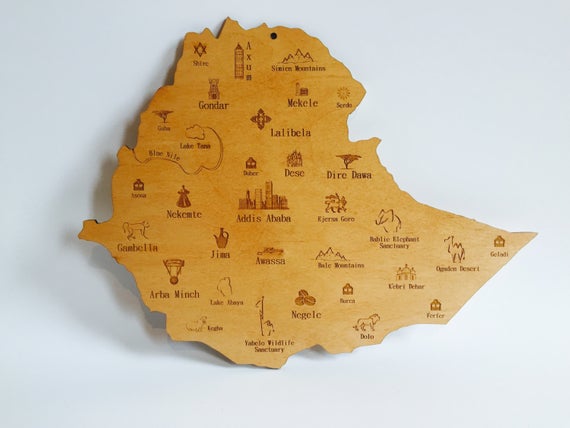
It also has a new, much admired, Prime Minister, its first female President, its first woman Federal High Court President, and a cabinet of whom half are women.
Combined with the recent peace agreement with Eritrea, you feel a sense of optimism everywhere.
Ethiopia in figures
At the same time, other figures are at play:
- For the population of 100 million, there are very few midwives, resulting in one of the highest maternal mortality rates in the world
- The literacy rate is approximately 49% of the adult population – 29 million adults are illiterate
Disability statistics for Ethiopia
- The WHO estimate for disability in Ethiopia is 2.6% higher than the global average, at 17.6% of the population, although national census statistics are much lower due the high stigma still attached to disability in the country
- The vast majority (95%) of disabled people are in poverty
- Life expectancy is much lower than in the West, which impacts the prevalence of disabilities, with impairments due to ageing – like being hard of hearing – being much lower than in the West (19% compared to 32% in the UK), and the main disabilities being vision impairments (42%) and mobility impairments (23%)
Causes of disability in Ethiopia
As part of the trip we visited Cheshire Services, an incredible rehabilitation centre for children with mobility impairments which helped us to understand some of the causes of disability in Ethiopia:
- Lack of health care around birth: Many disabilities are due to lack of information during pregnancy, and lack of access to hospital or midwives to help if there are complications during delivery
- Superstition, lack of information and lack of infrastructure: Parents in rural areas often think disability is ‘a curse’. They also may not think there’s anything they can do about it, and don’t know some mobility impairments can be fixed easily, in early years. Unfortunately, they often find out later when it’s harder to change. They can’t easily get to the few centres to get help, often don’t have the money to travel to get there, and need to leave their other children to make the trip.
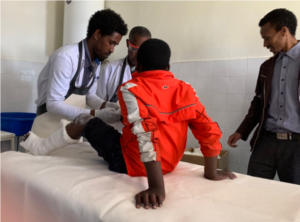
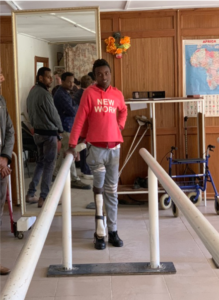
Two of our group were also able to go to a blind project in North Ethiopia where children are treated for the conditions that are causing their vision impairment, where possible, and also learn to live with their impairment. Of those with vision impairments in Ethiopia, blindness is either preventable or curable in 74% of the cases.
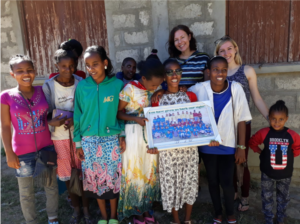
Another factor is lack of health and safety, especially on the roads. While Addis is a permanent building project for tower blocks and offices, the roads between them seem to have been forgotten. This 2016 quote from Addis Ababa: A City of Potholes article neatly summarises our experience, and admiration for the drivers that navigated us safely around the capital:
“A lot of cars on the streets of Addis Ababa carry the scars of some sort of accident. Part of the problem arises from the quality of roads. In Addis, roads are nowadays synonymous with potholes. In many instances drivers memorize the location of large potholes and open ditches in their daily commutes so as to drive around them at night.” writes Tibebeselassie Tigabu.
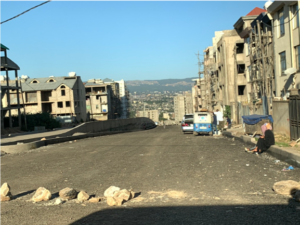
Finally, a history of regional conflicts has left many veterans wounded and requiring rehabilitation.
Digital accessibility work in Ethiopia – are Western Standards a good fit?
Back in 2014 I interviewed Sarah Lewthwaite – a Postdoctoral Researcher in Disability Studies at Kings College London – for my book ‘Including your missing 20% by embedding web and mobile accessibility’. At the time, Sarah’s critique of the impact of WCAG 2.0 was that the legal enforcement of compliance with it was dictating a single way of doing accessibility that might not necessarily be appropriate for every context across the globe. The example of her concern she gave was:
“Because of the nature of standards-making, there’s always going to be a lag in how they’re made. For example, the rise of mobile – particularly in the developing world now often referred to as ‘phone-first economies’ – has blindsided certain major technical companies. They were expecting the PC to remain the be-all-and-end-all of how people access the Internet. So standards have focused on web pages, accessed via browsers, on desktops. Meanwhile, a mobile revolution takes place and mobiles now are very popular across the globe. But for Africa, and the Far East, it has been far more important than I would say it has been to the UK or some Western nations. Standards haven’t been able to account for that; they have to be reactive to a certain extent.”
According to an ITU report: ‘among the world’s poorest 20% of households, nearly 7 out of 10 have a mobile phone. In fact, more households in developing countries own a mobile phones than have access to electricity or clean water.’ Our experience in Ethiopia bears this out well. Communications, especially for those in rural areas, is essential, and comms in Ethiopia means mobile.
Moreover, smartphones bring so many more opportunities than just voice calls. While only 1 in 5 people in Ethiopia have a bank account, so cash payments are key, 2 million Ethiopians use the M-Birr mobile banking service which ‘leads Europe’. Check out Matt Rees’ great article on how this technology is changing people’s lives across Ethiopia, and how 40% of Kenya’s national GDP moves through the similar M-PESA mobile payments system.
Mobile phones also provide the opportunity to bring education to places where education could never go. At Hassell Inclusion, we’ve always been passionate about eLearning, having created many awards-nominated innovations in elearning for disabled children over the years – for example, the Boris Games to help children learn sign language for employment (see video below):
So we’re really excited about projects like Aliim that is helping to educate Syria’s child refugees and providing hope for children fleeing from conflict
With all this emphasis on mobile, it is a relief that the recent WCAG 2.1 has finally introduced to the mainstream many of the mobile standards that our Digital Accessibility Framework, and the British Standard BS 8878 that I created in 2010, have been advocating for years.
Accessibility Guidelines – including the upcoming ISO 30071-1 that I am editing – are finally including the requirements necessary to ensure that mobile sites and apps made for people in the developing world are accessible for the higher than average number of people with disabilities or literacy difficulties.
The need for infrastructure and training
So, does this shift mean that people with disabilities in Ethiopia will get the accessible digital user experiences that could change their lives? Our experience is that solutions need to be holistic, affordable, scalable and durable. As we found out at Cheshire Services, while an aluminium leg brace for children with polio is much lighter than one made from steel, it’s also much more expensive as it needs to be imported, and it is nowhere near as durable. 3D printing is also being touted as a cheap way of producing braces, but it will only be a solution if it can be provided locally. Cheshire Services have a great history in this area – wheelchairs that might cost thousands of pounds in the UK, and much more to import into Ethiopia, are being made on the premises for around £150 each.
For digital technology, smartphones increasingly include assistive technologies as standard that would have been specialist downloads in the past. However, the rest of the assistive technology (AT) ecosystem is not in place to ensure that someone with an access need is: made aware of the ATs that could help them, assessed for which AT is most suitable for their needs, provided with the technology and trained in its use, and that it is supported and maintained after provision. The policy framework to provide this nationally in Ethiopia is not yet in place, so even if the creators of mobile sites and apps make them accessible, other parts of the puzzle need to be improved for full accessibility.
What we hope to do in the future
When Rosnah worked for Leonard Cheshire International she met the Coordinator of their services in Sierra Leone. He had a mobility impairment which made it difficult for him to move as a child. He literally spent his days in the family hut. And the only reason he received an education is that one of his siblings would sit with him when he got back from school and teach him. That sibling changed his brother’s life.
But if he had been deaf, his sibling would not have been able to teach him, and he might still be isolated in the family hut. We want to help change this, to facilitate the sort of transformation that comes from teaching a deaf boy sign language that you can see in this 4 minute video:
We have visited some great local charities that Ethiopiaid supports doing some amazing things, so we are looking at how we can help best going forwards.
We have much of the experience necessary to create more transformations like this: in helping nations set up AT ecosystems, in training mobile web and app creators in digital accessibility, and in creating innovations in accessible elearning.
So, if are already working in this field, and you think you could use our skills to partner with your project, please get in touch.
What do you think?
We’d love to know your thoughts on this blog. Please share your comments below.
Want more?
If this blog has been useful, you might like to sign-up for the Hassell Inclusion newsletter to get more insights like this in your email every month.
